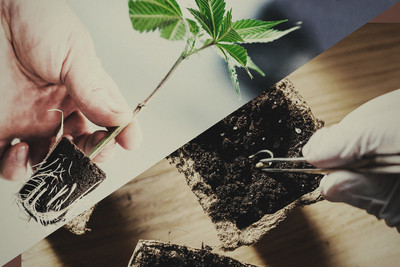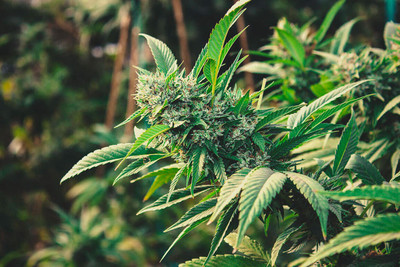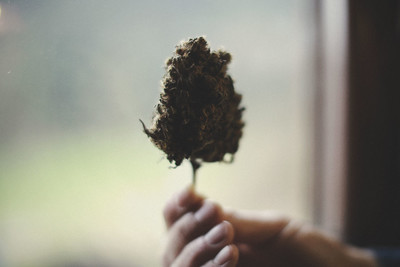Canabisul hermafrodit: Ce este și cum poți să scapi de el?
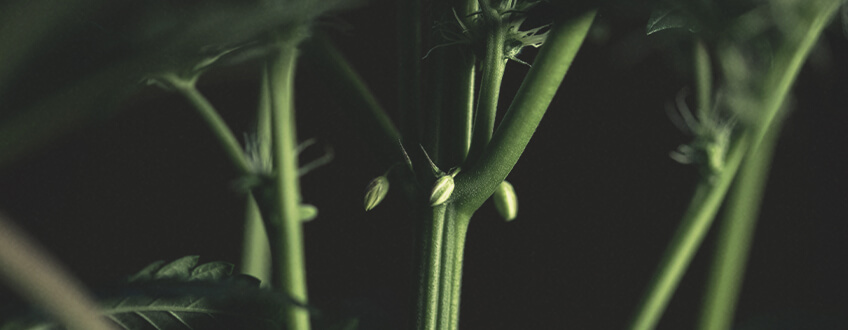
Crezi că există posibilitatea să ai de-a face cu un hermafrodit care amenință să-ți strice întreaga recoltă? Dacă da, va trebui să acționezi rapid. În acest articol, îți vom explica ce este canabisul hermafrodit, inclusiv cum să-l depistezi, să scapi de el și să-l previi în viitor.
Conținut:
- Ce este hermafroditismul?
- Ce anume provoacă hermafroditismul?
- Hermafroditismul ca instinct de supraviețuire
- Ce fel de stres poate rezulta în plante de canabis hermafrodite?
- Cum să identifici o plantă hermafrodită
- Cum să scapi de plantele hermafrodite de canabis
- Cum să previi în viitor hermafroditismul?
Ce este hermafroditismul?
Un hermafrodit este o plantă de marijuana care are atât flori de sex feminin, cât și de sex masculin. Canabisul este o specie de plantă dioică. Spre deosebire de alte plante cu flori, produce indivizi diferiți de sex masculin și feminin. Cu toate acestea, canabisul poate fi și hermafrodit, producând o singură plantă cu ambele organe sexuale, masculine și feminine.
Ce anume provoacă hermafroditismul?
Există mai multe cauze ale hermafroditismului în cazul plantelor de canabis. Printre acestea se numără:
• Genele
Uneori, plantele de canabis pot moșteni gene hermafrodite. Acest lucru se întâmplă în mod natural sau ca rezultat al încrucișărilor, stresul acestora putând induce hermafroditismul într-un soi.
• Manipularea semințelor
Manipularea și tratarea necorespunzătoare a semințelor pot crește șansele ca o plantă să fie hermafrodită. Printre acestea se numără feminizarea, un proces nenatural folosit de băncile de semințe și de crescători pentru a garanta un procentaj mare de plante femele în semințele lor. Realizată într-un mod corect, feminizarea va produce doar plante femele. Realizată într-un mod necorespunzător, pot apărea unele plante hermafrodite.
• Stresul
Plantele caută în mod natural condiții de mediu care să le permită să crească sănătoase și puternice. Când aceste condiții nu sunt îndeplinite, plantele sunt stresate. În cazul canabisului, acest stres poate cauza hermafroditismul.
Hermafroditismul ca instinct de supraviețuire
Pentru a înțelege mai bine hermafroditismul plantelor de canabis, este important să realizăm că, în unele cazuri, hermafroditismul reprezintă un mecanism de supraviețuire.
Întreaga producție de canabis sinsemilla este foarte nenaturală. Obligă plantele de canabis femele să rămână nefertilizate pentru perioade de timp extrem de nenaturale. Practic, acest lucru forțează planta să-și accelereze producția de THC și terpene, oferindu-ne bobocii extrem de puternici și aromați pe care îi căutăm.
Și asta fără a menționa numeroasele tehnici de antrenament pe care crescătorii de canabis le folosesc pentru a manipula plantele, stimulându-le să producă recolte mai mari. Chiar și crescătorii folosesc tehnici nenaturale (cum ar fi consangvinizarea) pentru a produce propriile semințe și pentru a crea soiuri foarte puternice, cu recolte mari, și homozigote.
Acum, este acest lucru bun sau rău? Ei bine, acesta este un subiect interesant care, din păcate, depășește cu mult sfera acestui articol. Pentru scopul acestei lecturi, este important să realizăm că creșterea canabisului nu este tocmai „naturală”, și că acest lucru poate decide de ce unele plante devin hermafrodite.
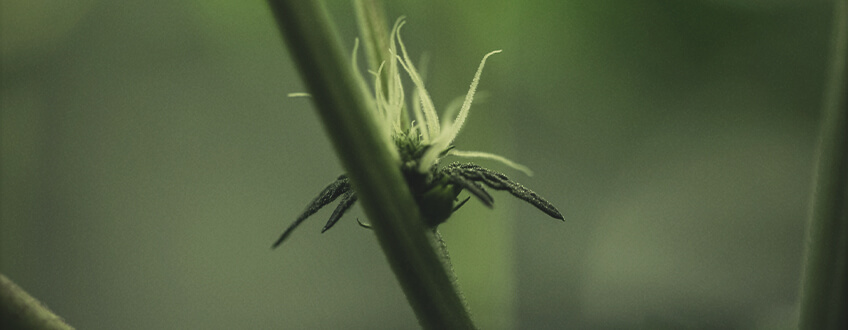
Ce fel de stres poate rezulta în plante de canabis hermafrodite?
Există multe moduri de a stresa plantele de canabis. Printre acestea se numără:
• Temperatura și umiditatea
Plantele de canabis preferă temperaturi de aproximativ 20 - 30°C și o umiditate relativă de 40 - 70%. Dacă temperatura sau umiditatea camerei tale de creștere depășește cu mult aceste intervale, este suficient pentru a rezulta în plante hermafrodite.
• Iluminatul
Probabil știi deja că iluminatul este foarte important pentru plantele de canabis. Dacă plantele tale sunt prea aproape de sursa de lumină, sau dacă programele tale de iluminat sunt haotice, acest lucru le poate stresa. Infiltrațiile de lumină în timpul perioadelor de întuneric reprezintă un mare factor de stres și ar trebui remediat imediat.
• Nutrienții
Plantele de canabis au nevoie de nutrienții potriviți pentru a produce muguri de calitate. Supra-alimentarea/sub-alimentarea poate stresa plantele, afectându-le capacitatea de a se dezvolta corespunzător și crescând riscul de a deveni hermafrodite.
• pH-ul
Folosirea unui mediu de creștere care este prea acid sau alcalin reprezintă un alt factor de stres pentru planta de canabis.
• Mediul de creștere necorespunzător
Mediul de creștere găzduiește rădăcinile plantelor tale, ajutându-le să absoarbă nutrienții și apa. Un mediu de creștere necorespunzător poate cauza probleme rădăcinilor, lucru care, ai ghicit, îți stresează plantele.
• Tehnici de formare necorespunzătoare
Tehnicile de formare, cum ar fi cele cu stres redus sau tăierea vârfurilor, sunt excelente pentru a îmbunătăți randamentul plantelor tale. Dar dacă sunt realizate într-un mod necorespunzător, acestea pot stresa plantele.
• Perioade lungi de înflorire
Uneori, plantele femele, care au avut parte de perioade lungi de timp fără polenizare, pot începe să producă polen într-un efort de auto-fertilizare.
Trebuie să reținem că plantele au nevoie de anumite condiții pentru a crește și a se dezvolta corespunzător, iar canabisul nu este diferit. Când cultivăm canabis, în special în interior, suntem responsabili pentru îndeplinirea acestor condiții. De asemenea, trebuie să avem în vedere că manipularea plantelor în moduri care ne avantajează, în termeni de recolte mai mari, muguri mai potenți și cu un gust mai bun, reprezintă un proces delicat.
Dacă facem ceva greșit, acest lucru poate provoca stres plantelor noastre, stres care poate induce hermafroditismul, mai ales dacă planta pe care o cultivăm are deja o predispoziție genetică spre hermafroditism.
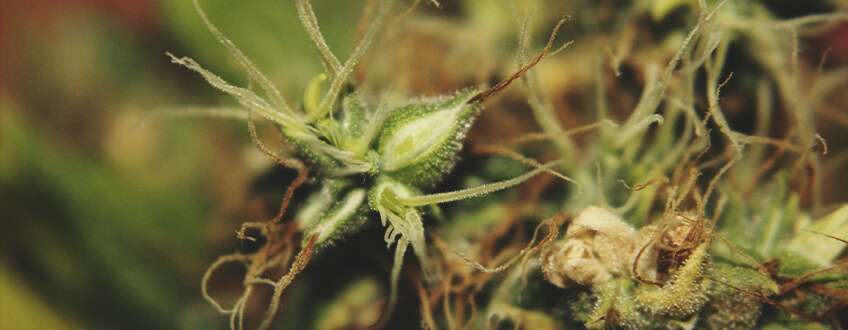
Cum să identifici o plantă hermafrodită
O plantă hermafrodită de canabis poate distruge întreaga recoltă de muguri de canabis prin eliberarea de polen în camera de creștere și prin fertilizarea femelelor. Când se întâmplă acest lucru, femelele își vor concentra energia pe producerea de semințe în loc de muguri mari și plini de rășină.
Prin urmare, este de la sine înțeles că trebuie să identifici cât mai rapid plantele hermafrodite. Unele plante vor da semne de hermafroditism devreme, din momentul în care încep să producă flori. Vei vedea că aceste plante dezvoltă atât structuri florale masculine, cât și feminine. Acestea se pot forma pe ramuri diferite sau pe aceeași ramură, iar unele plante hermafrodite dezvoltă chiar ambele structuri în același loc. Acestea se numesc „hermafrodite adevărate”.
Alternativ, unele plante pot deveni hermafrodite spre sfârșitul ciclului de înflorire. Acest lucru poate rezulta atunci când o plantă încearcă să se auto-polenizeze înainte de a muri. Astfel, deși mulți cultivatori tind să devină mult mai pasivi în timpul ciclului de înflorire, este important să verifici în mod regulat plantele și să fii atent/ă la florile hermafrodite în această etapă finală a vieții plantei.
Plantele care devin hermafrodite târziu în etapa de înflorire dezvoltă, de obicei, ceea ce unii cultivatori numesc „banane”. Este vorba despre stamina masculină (exact ca cea din interiorul unui sac de polen masculin), care a ieșit prin floarea feminină și poate elibera polen în orice moment. Tehnic vorbind, aceștia sunt muguri de sex mixt, nu plante hermafrodite adevărate.
Cum să scapi de plantele hermafrodite de canabis
Hermafroditele adevărate, la fel ca plantele de sex masculin, trebuie eliminate devreme pentru a evita polenizarea plantelor de sex feminin. Plantele cu muguri de sex mixt, pe de altă parte, pot fi recoltate.
Dacă una din plantele tale a produs „banane” spre sfârșitul etapei de înflorire, poți lua în considerare recoltarea plantei și păstrarea mugurilor, care ar trebui să nu aibă încă semințe. În funcție de stadiul plantei, aceasta poate produce încă un fum foarte bun.
Cum să previi în viitor hermafroditismul?
Din păcate, nu putem ști dacă o plantă are gene hermafrodite. Singurul lucru pe care îl poți face pentru a preveni hermafroditismul este următorul: oferă plantelor tale cele mai bune condiții de creștere și evită să le stresezi cu orice preț. Dacă folosești tehnici de antrenament (atât cu stres scăzut, cât și cu stres ridicat), asigură-te că știi ce faci.
În cele din urmă, asigură-te că îți cumperi întotdeauna semințele de la o bancă de semințe de canabis de încredere, a căror crescători fac tot posibilul pentru a minimiza hermafroditismul atunci când creează soiuri noi.


























